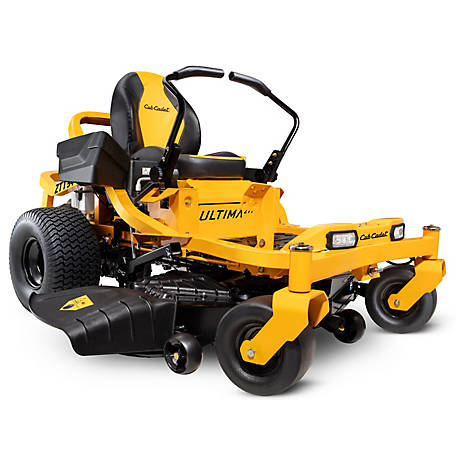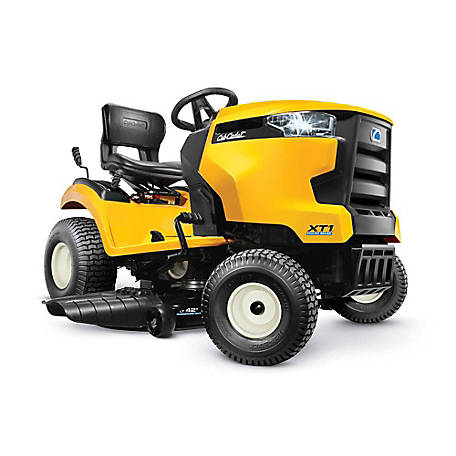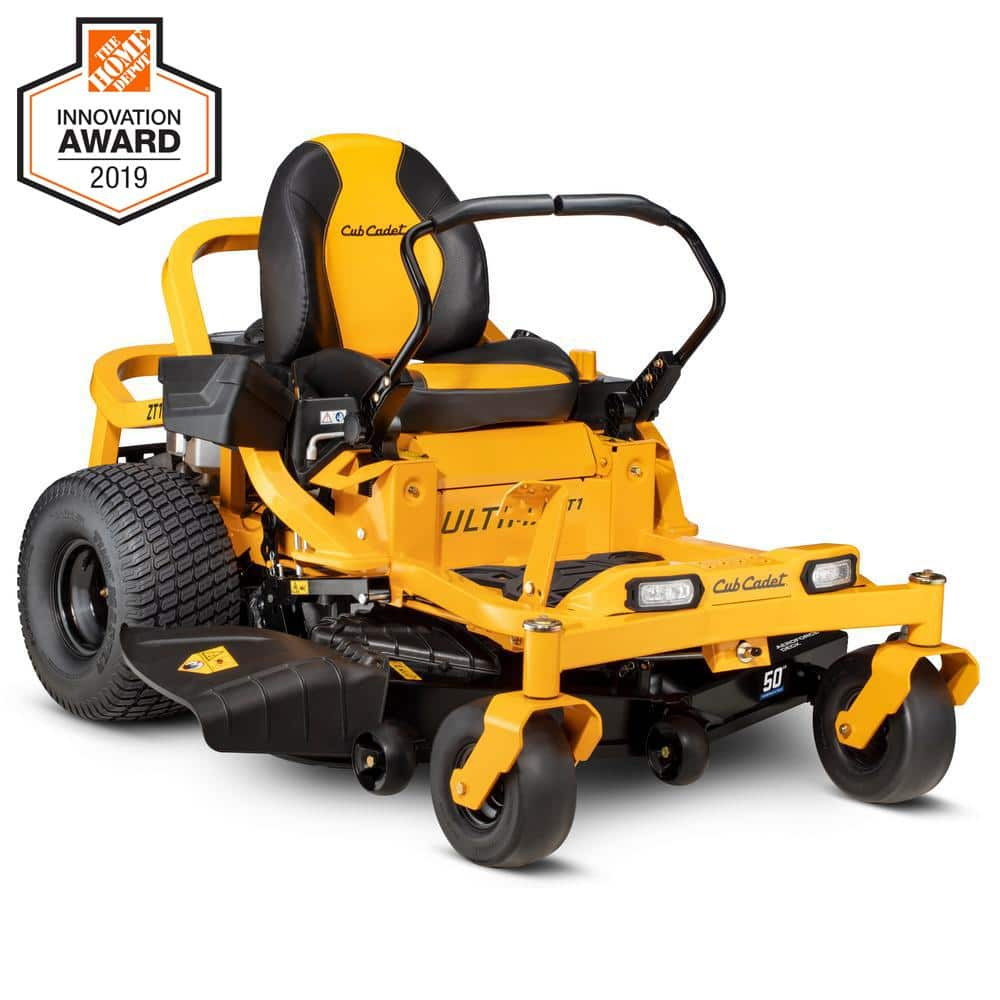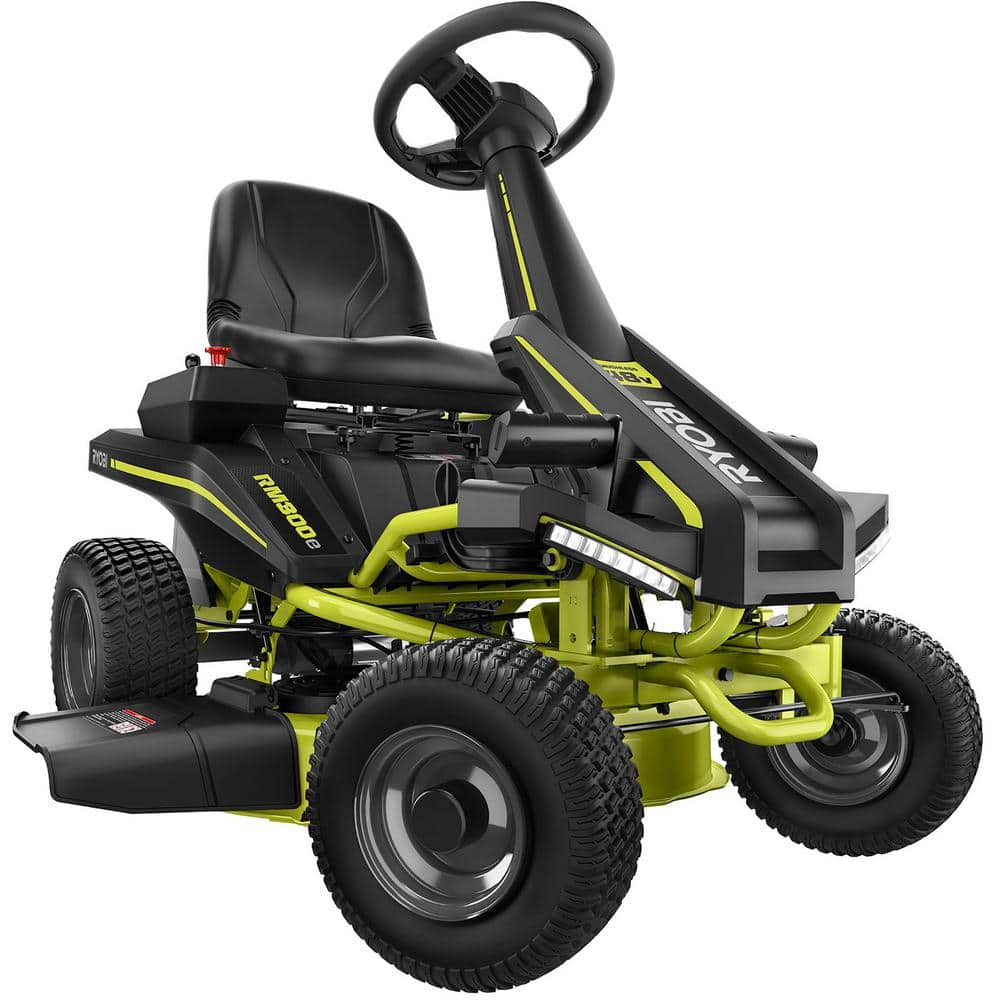Cub Cadet Ultima ZT1-54 24 HP Zero-Turn Riding Lawn Mower with Kohler 7000 Series V-Twin OHV 4-Cycle 725cc Engine, 17AREACM010
Equipped with an 11-Gauge 54 in. fabricated (Welded) triple-blade high lift deck with reinforced leading edges that results in finer clippings, fewer clumps, reduced stragglers and increased evenness, protected by the Cub Cadet triple guard corrosion defense system with e-coat and a lifetime warranty.
Introducing the ULTIMA ZT1 SERIES. Step up to the ultimate all-around mowing experience. The Cub Cadet ULTIMA Series ZT1 54 features a 24HP/725cc Kohler 7000 Series V-Twin OHV 4-Cycle Engine, 2 in. x 2 in. tubular steel frame, comfortable high back seat and much more. The Ultima Zero-Turn Riding Mower was built to raise the bar for enhanced strength, durability, redefined comfort and uncompromised performance.
- Equipped with an 11-Gauge 54 in. fabricated (Welded) triple-blade high lift deck with reinforced leading edges that results in finer clippings, fewer clumps, reduced stragglers and increased evenness, protected by the Cub Cadet triple guard corrosion defense system with e-coat and a lifetime warranty
- 24HP/725cc Kohler 7000 Series V-Twin OHV 4-Cycle Engine, V-twin cylinders reduce vibration for a smoother ride, Designed to run cooler and cleaner for longer, Delivers more power while decreasing fuel consumption
- Dual Hydro-Gear 2200 (EZT) Hydrostatic Drive System, Fan cooled 10cc pumps and wheel motors on each drive wheel, Provides optimal torque and speeds up to 7 MPH
- Tough and tubular frame the high-strength, continuous square 2 in. x 2 in. tubular steel frame with fully e-coat lower frame and triple guard corrosion defense system, a multi-step process electronically applies automotive-grade corrosion resistance with meticulous care to protect against wear and tear
- Dial in your perfect cut with a foot operated deck lift and a dial control knob offering 15 qt. in. deck height adjustments from 1 in. to 4. 5 in. leading to a precise and even cut
- High comfort, high performance an automotive-inspired, ergonomic, fully adjustable premium 18 in. H-back seat and a durable, advanced polymer seat suspension system, adjustable lap bars and industry-exclusive ergonomic hand grips optimized for comfort providing you the confidence to maximize your speed and reduce operator fatigue
- Turf damage prevention 11 in. x 6 in. to 5 in. smooth tread front wheels pivot 180 without turf damage, 20 in. x 10 in. to 8 in. turf master premium rear tires offer excellent traction, minimize turfing and provide a better ride on uneven ground at higher speeds
- Ease of maintenance an open frame design and hinged/removable floor pan allow easy access to the deck and engine for quick and simple maintenance
- Command center conveniently located control panel enhances operator productivity and vibration-dampening soft rubber floor mat provides sure footing, comfort and ample leg room
- Precision trimming offset front casters align with blade edge for trimming precision while maintaining line-of-sight and stable balance
- Illuminating dual-LED headlights provide ultimate vision for mowing in low light conditions and tow hitch come standard
- Mow for an extended period of time: 3.5 gal. fuel tank capacity to keep you mowing and minimize time loss for refueling needs
- Electronic fingertip blade engagement PTO allows for smooth operation of the deck
- 3-way adjustable ergonomic lap bar design with integrated parking brake and mow-in-reverse, provides comfort with a simple operation
- Ideal for mowing slight rolling hills and several obstacles up to 4 acres
- Expand your mowers capabilities: full lineup of premium attachments and accessories include baggers, mulch kits, carts and many other attachments (sold separately)
- Cub Cadet Ultima ZT1-54 comes fully crated and requires some assembly upon arrival
The Strongest Warranty in it’s class 3-year / unlimited-hour warranty. Plus, limited lifetime warranty on frame and fabricated deck shell.
Additional information
| Cut Height Range | 15 in. deck height adjustments from 1 in. to 4.5 in. |
|---|---|
| Cutting Width | 54 in. |
| Deck Size | 54 in. |
| Front Wheel or Tire Size | 11 in. x 6 in. |
| Product Weight | 600 lb. |
| Product Length | 80 in. |
| Product Height | 47 in. |
| Product Width | 65 in. |
| Rear Wheel or Tire Size | 20 x 10 in. |
| Seat Back Height | 18 in. |






by Sayre
The zero trun is awesome mower and mow great and handles great.
by Robnreb
Stout, smooth, quick, and easy to maneuver. Learning to operate is easy.
by Tracy
Runs like a top. Performs like a more expensive commercial machine. Works very well for maintaining the 3 acres I need to mow.
by Maine
Dont know its been a month and its not here, wont be here for another week.